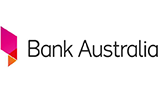Refinancing
When should you refinance your home loan?
By Jared Mullane
Compare refinance home loan rates from 4.74% p.a. (comparison rate^ 5.58% p.a.)
Browse 100+ lenders - fast, easy & free
See personalised results in under 2 minutes
Get expert help with refinancing your home loan
Refinance with support from our trusted team of home loan experts. Updated 5 Dec 2025.

Loan amount | ||
 | Pacific Mortgage Group Fixed Home LoanInterest rate 4.74% per annum (fixed 2 years) Comparison rate 5.07% per annum Max LVR 80% Repayments from $2,605Fixed paying Principal & Interest | Compare now on Money.com.au or visit site |
 | Australian Mutual Bank Fixed Rate Home Loan Owner OccupiedInterest rate 4.74% per annum (fixed 3 years) Comparison rate 5.50% per annum Redraw App Fee: $250 Max LVR 95% Repayments from $2,605Fixed paying Principal & Interest | Compare now on Money.com.au or visit site |
 | Australian Mutual Bank Fixed Rate Home Loan Owner OccupiedInterest rate 4.74% per annum (fixed 2 years) Comparison rate 5.58% per annum Redraw App Fee: $250 Max LVR 95% Repayments from $2,605Fixed paying Principal & Interest | Compare now on Money.com.au or visit site |
 | Bank Australia Clean Energy Fixed Home Loan 7.5 Star +Interest rate 4.79% per annum (fixed 3 years) Comparison rate 5.41% per annum Split Loan Max LVR 90% Repayments from $2,620Fixed paying Principal & Interest | Compare now on Money.com.au or visit site |
 | Community First Bank Boost Package Home Loan FixedInterest rate 4.79% per annum (fixed 2 years) Comparison rate 5.62% per annum Redraw Max LVR 80% Repayments from $2,620Fixed paying | Compare now on Money.com.au or visit site |
 | Illawarra Credit Union Boost Package Home Loan FixedInterest rate 4.79% per annum (fixed 2 years) Comparison rate 5.62% per annum Redraw Max LVR 80% Repayments from $2,620Fixed paying Principal & Interest | Compare now on Money.com.au or visit site |
 | Pacific Mortgage Group Fixed Home LoanInterest rate 4.84% per annum (fixed 3 years) Comparison rate 5.06% per annum Max LVR 80% Repayments from $2,635Fixed paying Principal & Interest | Compare now on Money.com.au or visit site |
 | Pacific Mortgage Group Fixed Home LoanInterest rate 4.84% per annum (fixed 1 year) Comparison rate 5.11% per annum Max LVR 80% Repayments from $2,635Fixed paying Principal & Interest | Compare now on Money.com.au or visit site |
 | G&C Mutual Bank Fixed Rate Home Loan – Owner OccupiedInterest rate 4.85% per annum (fixed 3 years) Comparison rate 4.93% per annum Redraw App Fee: $500 Max LVR 95% Repayments from $2,638Fixed paying Principal & Interest | Compare now on Money.com.au or visit site |
 | Easy Street Fixed Home LoanInterest rate 4.89% per annum (fixed 3 years) Comparison rate 5.26% per annum Redraw Offset App Fee: $500 Max LVR 95% Repayments from $2,651Fixed paying Interest only | Compare now on Money.com.au or visit site |
 | Easy Street Fixed Home LoanInterest rate 4.89% per annum (fixed 3 years) Comparison rate 5.26% per annum Redraw Offset App Fee: $500 Max LVR 95% Repayments from $2,651Fixed paying Principal & Interest | Compare now on Money.com.au or visit site |
 | ING Fixed Rate Loan with Orange AdvantageInterest rate 4.89% per annum (fixed 2 years) Comparison rate 5.32% per annum Split Loan Max LVR 80% Repayments from $2,651Fixed paying Principal & Interest | Compare now on Money.com.au or visit site |
 | Community First Bank Boost Package Home Loan FixedInterest rate 4.89% per annum (fixed 3 years) Comparison rate 5.61% per annum Redraw Max LVR 80% Repayments from $2,651Fixed paying | Compare now on Money.com.au or visit site |
 | Illawarra Credit Union Boost Package Home Loan FixedInterest rate 4.89% per annum (fixed 3 years) Comparison rate 5.61% per annum Redraw Max LVR 80% Repayments from $2,651Fixed paying Principal & Interest | Compare now on Money.com.au or visit site |
 | Community First Bank Go Basic fixed Home LoanInterest rate 4.94% per annum (fixed 3 years) Comparison rate 5.21% per annum Redraw App Fee: $600 Repayments from $2,666Fixed paying | Compare now on Money.com.au or visit site |
 | Illawarra Credit Union Go Basic Fixed Home LoanInterest rate 4.94% per annum (fixed 3 years) Comparison rate 5.21% per annum Redraw App Fee: $600 Max LVR 80% Repayments from $2,666Fixed paying Principal & Interest | Compare now on Money.com.au or visit site |
 | The Mutual Bank Package Home Loan FixedInterest rate 4.94% per annum (fixed 3 years) Comparison rate 6.75% per annum Redraw Offset Split Loan Max LVR 95% Repayments from $2,666Fixed paying Principal & Interest | Compare now on Money.com.au or visit site |
 | The Mutual Bank Package Home Loan FixedInterest rate 4.94% per annum (fixed 2 years) Comparison rate 6.93% per annum Redraw Offset Split Loan Max LVR 95% Repayments from $2,666Fixed paying Principal & Interest | Compare now on Money.com.au or visit site |
 | Up Home Up Home Fixed TermInterest rate 4.95% per annum (fixed 2 years) Comparison rate 5.15% per annum Redraw Offset Max LVR 80% Repayments from $2,669Fixed paying Principal & Interest | Compare now on Money.com.au or visit site |
 | Up Home Up Home Fixed TermInterest rate 4.95% per annum (fixed 1 year) Comparison rate 5.18% per annum Redraw Offset Max LVR 80% Repayments from $2,669Fixed paying Principal & Interest | Compare now on Money.com.au or visit site |
You’ve viewed 20 of 2039 items |
We help you compare
100+
Lenders (including the ones that don't pay us)
1,600+
Mortgage products
30,000+
Product data points
Step 1
Run through some quick questions to help check your eligibility and preferences.
Step 3
Our home loan experts will help you choose the loan that’s right for you.

Nathan from Queensland
"We bought our first house about 12 months ago, but I was talking to the boys at work and everyone seemed to be on a better interest rate than I was. So I figured I’d check it out online and do a comparison and came across Money.com.au. I entered a few details to see if I could get a cheaper rate and ended up talking to Nick, who was awesome. He did exactly what he said he was going to do, made it easy and got everything sorted for me. We ended up saving half a percent on our loan, so as much as the last two RBA rate cuts and all up we’re saving around $300 a month."
Nathan from Queensland

Editor
With interest rates trending down since the start of the year and borrowing conditions improving, refinancing activity has surged to a four-year high. Australians refinanced 618,966 loans in the year to September 2025. Over the same period, new loans totalled 537,326 — meaning refinancing now exceeds new lending by 81,640 loans. Internal refinancing is up 29% year-on-year, almost double the 15% annual growth in external refinancing. Money.com.au research shows a third of homeowners (33%) would only consider switching lenders if the saving was at least 1% on their home loan. But generally, doing nothing rarely pays — so it’s worth speaking with your lender or a broker to see whether you could secure a sharper rate.
Total home loan refinances in the last 12 months
554,820
Internal refinances compared to a year ago
+33%
External refinances compared to a year ago
-11%
Average time before people refinance their home loan
5 years
Average loan amount for people switching banks
$594,815
Average property valuation price for refinancers
$1,203,503
| Loan | Interest rate | Comparison rate^ | Max LVR |
|---|---|---|---|
| Geelong Bank Spring Variable Home Loan Special | 4.99% | 5.02% | 80% |
| in1bank in1home | 5.08% | 5.13% | 50% |
| Gateway Bank Green Plus Home Loan | 5.10% | 5.40% | 80% |
| Homestar Finance Star Essentials | 5.14% | 5.14% | 80% |
| Pacific Mortgage Group Owner Occupied Variable Home Loan | 5.14% | 5.14% | 80% |
| People First Bank Basic Variable Home Loan | 5.14% | 5.15% | 70% |
| People's Choice Credit Union Basic Variable Home Loan | 5.14% | 5.15% | 70% |
| RACQ Bank Fair Dinkum Home Loan | 5.14% | 5.15% | 60% |
| RACQ Bank Fair Dinkum Home Loan | 5.14% | 5.15% | 60% |
| Heritage Bank Discount Variable OO P&I | 5.14% | 5.16% | 70% |
| Loan | Interest rate | Comparison rate^ | Max LVR |
|---|---|---|---|
| Pacific Mortgage Group Fixed Home Loan | 4.74% fixed 2 years | 5.07% | 80% |
| Australian Mutual Bank Fixed Rate Home Loan Owner Occupied | 4.74% fixed 3 years | 5.50% | 95% |
| Australian Mutual Bank Fixed Rate Home Loan Owner Occupied | 4.74% fixed 2 years | 5.58% | 95% |
| Bank Australia Clean Energy Fixed Home Loan 7.5 Star + | 4.79% fixed 3 years | 5.41% | 90% |
| Illawarra Credit Union Boost Package Home Loan Fixed | 4.79% fixed 2 years | 5.62% | 80% |
| Pacific Mortgage Group Fixed Home Loan | 4.84% fixed 3 years | 5.06% | 80% |
| Pacific Mortgage Group Fixed Home Loan | 4.84% fixed 1 year | 5.11% | 80% |
| Horizon Bank Fixed Rate Home Loan | 4.84% fixed 3 years | 5.58% | 70% |
| Horizon Bank Fixed Rate Home Loan | 4.84% fixed 2 years | 5.65% | 70% |
| G&C Mutual Bank Fixed Rate Home Loan – Owner Occupied | 4.85% fixed 3 years | 4.93% | 95% |
Refinancing means switching your current home loan to a different lender (external financing) — usually to get a lower interest rate — or a different loan product or higher loan amount with your current lender (internal financing)
When you refinance to a home loan offering better terms (interest rate, fees, features), your repayments could be lower with the new loan. You can also refinance your home loan to get a better repayment structure or to access certain features your current mortgage doesn’t have, like an offset account or redraw facility.
A Money.com.au survey found that a third of borrowers would only consider refinancing if their new rate was at least 1% lower than their current one (e.g. from 6.00% to 5.00%), while 23% would act on a 0.50% reduction, and 22% would move for a 0.75% drop. Interestingly, 8% admit they don’t know their current rate, and 4% aren’t actively managing their home loan at all.

This is a straight swap, meaning your current home loan is closed, and your remaining balance is transferred to the new loan. In this instance, you’re not taking on extra debt and your repayments will be lower if you switch to a lower rate with the same loan term. If you opt for a shorter term, your repayments could be higher but you’ll save even more interest as the loan balance will fall faster.
You can also refinance your mortgage to access some of your home equity. This is done by increasing your existing home loan balance, known as a top-up or with a cash-out refinance (where your equity is paid as a lump sum). A home loan top-up can also include consolidating high-interest debts, such as credit cards and personal loans, into your mortgage, which typically has a lower interest rate. In either case, you’re increasing your debt, so your repayments will be higher after the refinance.

Peter Drennan, Money.com.au's Research & Data Expert
"Refinanced loans increased in the final quarter of 2024 for the first time that year. While the annual growth rate was still negative at -9%, this was an improvement from -12% in the previous quarter — indicating a possible trend reversal heading into 2025 (as shown in the graph above)."
Peter Drennan, Money.com.au's Research & Data Expert
According to ABS data, external refinances (where borrowers switch lenders) averaged $594,815, compared to $536,866 for internal refinances with the same lender. In the March 2025 quarter alone, there were 65,030 external owner-occupier refinances, significantly outpacing the 39,580 internal ones. Among investors, 32,805 refinanced externally, while 12,434 chose to stay with their current lender.
Based on Money.com.au’s analysis, an average homeowner could save nearly $3,800 a year by refinancing to a lower rate. That's enough to cover a flight from Sydney to Bali for two people, plus a week's accommodation in Ubud – or two 13-inch Apple Macbooks.
That's based on the average external home loan refinance of around $600,000, switching from the average variable interest rate for existing loans (6.36% p.a. per the RBA’s Housing Lending Rates) to one of the lowest ongoing refinance variable rate on Money.com.au’s database is (5.64% p.a), with 25 years remaining on the loan.
Potential savings on a $600,000 home loan by refinancing to a lower rate
| Interest rate | 6.50% p.a. | 6.25% p.a. | 6.00% p.a. | 5.64% p.a. |
|---|---|---|---|---|
Monthly repayments | $4,051 | $3,958 | $3,865 | $3,735 |
Monthly savings | ❌ | $93 | $186 | $316 |
Yearly savings | ❌ | $1,116 | $2,232 | $3,792 |
Total interest paid over the loan term | $615,373 | $587,405 | $559,743 | $520,457 |
Total savings over the loan term | ❌ | $27,968 | $55,630 | $94,916 |
Despite the potential savings on offer, our survey found that nearly three in 10 Australians have never refinanced. Another key insight relates to loan terms being reset after refinancing. Around a third said their lender restarted their term back to 30 years – with their agreement. However, 8% weren’t aware this had happened until after the fact, while 29% retained their original loan term.

Mansour Soltani, Money.com.au's Home Loans Expert
“When refinancing, many lenders will default you back onto a 30-year loan term, which cancels out any savings you might gain from a lower rate. In fact, you'll end up paying more interest overall as the longer loan term increases the total interest paid over time. If you refinance to a lower rate, but keep your regular repayment at the same level as your old loan, your loan term should be shorter under the new loan.”
Mansour Soltani, Money.com.au's Home Loans Expert
See your estimated refinance home loan repayments per week, fortnight or month.

Find out the impact of interest rate changes on your repayments.
According to Mansour, the most common reason borrowers refinance their mortgage is to get a lower interest rate. As an established borrower, lenders are eager for your business and may offer you lower interest rates and fees, with better loan features.
Right now, a competitive interest rate typically starts with a ‘5’ – but that could drop even further. The big four banks have released their forecasts for the rest of 2025 and into 2026, and more rate cuts are on the horizon:
If you’ve built up equity in your property, refinancing could allow you to borrow more against that equity for purposes like renovating, buying an investment property (i.e. using your equity as a deposit) or investing in shares. You can do this by increasing your existing home loan with a top-up or with a cash-out refinance.
Refinancing to a shorter loan term will mean big interest savings if you can afford higher repayments. For example, refinancing a $600,000 home loan at 6.00% p.a. from a 25-year term to a 24-year term would increase your monthly repayments by $70, but would save you $26,213 in interest over the life of the loan.
You can refinance your mortgage to switch to a fixed rate or change from a fixed to a variable rate. Or, from principal and interest repayments (P&I) to interest-only (or vice versa). Switching to a different loan product allows you to remain with your current lender if you’re satisfied with them (although it doesn't hurt to negotiate a lower interest rate while you’re at it).
Refinancing your home loan could allow you to consolidate debts into your mortgage (i.e. increase your home loan size). This would mean a potentially lower rate on those debts, but likely over a longer loan term (meaning you could end up paying more interest over time).
If your fixed rate is coming to an end and you don’t want to be automatically rolled onto your lender’s standard variable rate, you’ll need to refinance. You have the option to switch to another fixed-rate home loan or opt for a variable rate (or a split between the two). It's important to note that refinancing before the end of your fixed period can result in break costs, so timing is crucial.
If you’ve separated from a partner with whom you co-borrowed, you’ll generally need to refinance to buy out the other person’s share in the home. Most lenders won’t allow you to remove a joint applicant from the loan.
Some people simply refinance because they have had a poor experience with their current lender and want to vote with their feet. You’ll need to evaluate whether the benefits of switching outweigh the refinancing costs before deciding to refinance.

The refinancing process is very similar to taking out a first-home buyer home loan to buy a property initially. But, there are some specific steps that could help you to get the best deal possible as a refinancer.
The average mortgage rate in Australia is higher for existing customers than those taking out a new loan, but there's no harm in asking your current lender if they can give you a discount.
“Particularly if it's a high loan amount, lenders want to hold that loan on their books”, Mansour explains. So, they'll typically come back with a better rate, or they might try to make the difference between their rate and the competitor’s so small that you decide refinancing isn’t worth it,” he says.
When you’re refinancing property, the mantra ‘location, location, location’ changes to ‘valuation, valuation, valuation’.
A lender will have your property valued as part of the refinancing process. Mansour says he compares multiple lenders for his clients in a bid to get the highest valuation possible. He calls this ‘shopping the val’.
A higher valuation can mean you’re eligible to refinance at a lower interest rate, or being able to borrow more against your equity. According to Mansour, the lender offering the lowest rates can often be more conservative when valuing properties. Hence the need to shop around.
Do a thorough home loan rates comparison. Getting a lower interest rate on your home loan by refinancing will save you money. Sometimes a lot of money.
The trade-off with some of the lowest rate home loans is they tend to be available on more basic home loans that are light on features (which isn’t an issue if you’re light on savings).
Refinancing to a loan with better features can reduce your rate payable and shave years off your mortgage.
If there are application fees for refinancing to a new lender, ask if these can be waived. In a lot of cases, they can be if the lender is keen to get the deal across the line or your broker has a strong relationship with the lender. The home loan fees charged by your existing lender when you leave (discharge fees) are naturally harder to negotiate away.
Most lenders set the interest rates on their loans based on your loan-to-value ratio (LVR). Knowing roughly what your LVR is gives you an idea of where to focus your search (and what rate you may qualify for). You’re likely to get a better interest rate when your LVR is 60% or less.
Some refinancers just want a better version of the same kind of loan. But you can also refinance to a different loan structure or type. Generally, you want a loan that’s going to save you interest and/or improve your financial situation.
This is the form you need to submit to instruct your current lender that you’re leaving. But there is a very specific reason for requesting it at this stage, according to Money’s home loans expert, Mansour Soltani.
“After you request a discharge form, you will get a call from your lender's retention team. If you have a competitive rate from another lender ready to quote to them, more often than not, they will match it to keep your business.”
Once you’ve chosen a new loan, you usually get the ball rolling by submitting an enquiry with the lender. Typically, you get a call back from a mortgage specialist who talks you through the process and asks initial questions to gauge your eligibility. They’ll explain what you’ll need to submit as part of your application.
In either case, you’ll need to submit some paperwork along with the form, including income documentation (e.g. payslips), bank statements showing the last three months of activity (for all accounts including credit cards), statements for the home loan being refinanced and proof that your property is insured.
The lender will go through your application in detail and check your bank account statements line by line. You may be asked to clarify specific points or provide extra detail.
The lender will also do a credit check and order a valuation of your property. Be sure to highlight any recent improvements to your property that might bump up the valuer’s appraisal. If the valuation is high enough that your LVR meets the loan eligibility criteria, your loan will be fully approved.
You’ll need to sign the loan discharge form and submit it to your old lender. In a lot of cases, the new lender or your mortgage broker will take care of this. All you need to do is sign the form.
Once the old loan is discharged, the new one is settled. Basically that means your new lender pays off your old loan. The old loan is then closed, and your new lender opens a loan account for you. Set a reminder to review your loan in 12 months’ time to make sure it’s still competitive.


"I’ve refinanced my home loan twice in the last three years. Each time I refinanced I got a much better deal, and earned cashback in the process. But on both occasions there were several things I knew by the end of the process that I wish I’d known at the start (how long it can take for starters)."
My tips from my experience of switching home loans:

Just because you were initially eligible for a home loan, it doesn’t mean you will automatically be approved to refinance. A new lender will still assess your home loan application thoroughly.
If your circumstances have changed (your income, other debts, credit score etc.), that will be taken into account. That said, having a record of consistently repaying your previous home loan will likely count in your favour.
The valuation of your property matters a lot here too. If your property has dropped in value since you first took out your loan, refinancing may be more difficult unless you have paid off a big chunk of the loan in the meantime.
“The best thing you can do in this scenario is ask for a pricing review with your current lender, just don’t be surprised if the lender doesn’t ultimately offer you a discount,” Mansour explains.
If you’re concerned about your eligibility to refinance, using a mortgage broker could be worthwhile as they have specialist knowledge of lenders’ policies and ‘serviceability buffers’ (the difference between your actual minimum repayment and the higher amount the lender will use to assess whether you could still afford the loan if rates increase.).
Pros
Cons
You can usually apply for a refinance home loan online in a matter of minutes, but realistically it can take 4-6 weeks for the entire process from start to finish (depending on the lender and complexity of your loan).
This could be as simple as asking to be moved to a different product if the lender has a better deal available. However, if you’re changing the structure or type of loan, you will typically still need to complete an application that will be subject to approval.
Examples could include:
There's no strict upper limit on how often you can refinance, but it's important to consider the associated costs. Generally, you need to stay on a particular loan long enough for the savings to outweigh the refinancing costs.
Remember too that refinancing involves a new application and credit enquiry that goes on your credit report. Refinancing very frequently could become a red flag for future lenders. Plus, what lender is going to want to sign up a borrower who is very unlikely to hang around for long?
According to Money.com.au's analysis of various lenders, refinancing costs can range from $500 to $2,000. These costs typically include:
A lot of the time, it’s possible to negotiate with your new lender to reduce or remove the upfront costs of the new loan. Or if the lender is offering cashback for people who refinance with them, this will likely outweigh any cost.
Yes, it’s possible to refinance even if you’re on a fixed-rate loan. However, there is usually a fee for breaking the fixed term. This can be several hundred dollars depending on the loan, so it’s worth thinking carefully whether refinancing will be worth it.
If you’re on a very uncompetitive fixed-rate loan with a decent chunk of time left on it, paying the break fee may ultimately be a smart move.
You can generally fix your home loan for a period of one to five years. This means your interest rate stays the same during that period, giving you certainty over your repayments.
You can refinance anytime, but it’s typically best to wait at least two years after your original loan settles. Frequent switching usually triggers fees and may raise concerns from lenders.
Most borrowers refinance to get a lower interest rate, access equity, switch to a shorter loan term, or change loan types. Other common reasons include consolidating debt, coming off a fixed rate, restructuring finances after a separation, or simply being dissatisfied with their current lender.
Refinancing may not be worth it if your loan-to-value ratio (LVR) is above 80%, as it could mean paying lender’s mortgage insurance (LMI). It’s also best to avoid refinancing if there are high exit or upfront fees, you’re close to paying off your loan, or your financial situation has worsened.
Refinancing through a mortgage broker can save time and give you access to a wide range of lenders and deals, usually at no cost. Brokers take care of the paperwork and negotiations, but typically won’t work with every lender. Going directly to a lender may suit you if you’re confident comparing loans and handling the process on your own.
A cash-out refinance is when you replace your current home loan with a new, larger one and take the difference in cash. It lets you access the equity you’ve built up in your property and use the funds for things like renovations, paying off debts, or major expenses. Just keep in mind: you’ll be increasing your loan balance and repayments.
Most lenders prefer you to have at least 20% equity in your home when refinancing. This means your loan-to-value ratio (LVR) should be 80% or less. If you have less equity, you may still be able to refinance, but you could face higher interest rates or need to pay Lender’s Mortgage Insurance (LMI).
Refinancing doesn’t reset your home loan entirely, but it can extend or shorten your loan term depending on what you choose. For example, if you refinance to a new 30-year loan, your repayments may be lower, but you’ll pay more interest over time. You can also refinance into a shorter term to pay off your loan faster.
When you refinance, your new lender pays out your old home loan in full, and that loan is closed. You then start making repayments on the new loan under the new terms – such as a different interest rate, loan amount, or loan length. Your old lender may charge discharge or exit fees as part of the process.
A refinance cashback offer is a promotion where your new lender gives you a lump sum of money as a reward for refinancing your home loan with them. It can help cover some of the upfront costs like application fees or valuation fees, making refinancing more affordable. Cashback amounts and terms vary between lenders.
There’s no one-size-fits-all answer to the best bank for refinancing – it depends on your personal situation, loan amount and goals. Top lenders often include the big four banks, plus competitive smaller banks and online lenders. Comparing interest rates, fees, features and customer service is key to finding the best fit for you.
If your old loan has a discharge fee, it typically ranges between $350 and $500. However, it may not always be called a discharge fee – lenders sometimes use terms like exit fee, loan closure fee, or early termination fee instead.
Compare multiple lenders, easily.
Loan Amount
Home loan comparison rates are calculated based on a loan amount of $150,000 repaid over a 25-year term with monthly repayments. The comparison rates only apply to the examples given. Different loan amounts and terms will result in different comparison rates. Costs such as redraw fees or early repayment fees and cost savings such as fee waivers are not included in the comparison rate but may influence the cost of the loan. Check with the provider for full loan details, including rates, fees, eligibility and terms and conditions to make sure the product is right for you.
General information only
The information on this page is general in nature and has been prepared without considering your objectives, financial situation or needs. You should consider whether the information provided and the nature of any home loan product is suitable for you and seek independent financial advice if necessary.
We are not providing you with a recommendation or suggestion about a particular home loan. You should read the relevant disclosure statements or other offer documents before deciding whether to apply for or continue to use a particular product.
What products, features and information are shown
While we make every effort to ensure all home loans available in Australia are shown in our comparison tables, we do not guarantee that all products are included.
Our product comparisons may not compare all home loan features and attributes relevant to you.
Product information, such as interest rates, fees and charges, is subject to change without notice. Before acting on any information, you should confirm the relevant product information with the lender.
How home loans are sorted and filtered by default
Users can easily change the sort order and apply product filters to our product comparison tables. However, when you arrive on a page initially, by default home loans are sorted by:
Some home loan products listed in our tables are available through a mortgage broker. These are the products with an option to ‘Check Eligibility on Money.com.au’. Mortgage brokers may not be able to offer loans from every provider and there may be more suitable loans for your personal circumstances.
Mortgage brokers are not authorised by Money's Australian Credit Licence and operate under their own Australian Credit Licence, or as a credit representative of another Australian Credit Licensee. Mortgage brokers can make recommendations about home loan products that may suit your objectives, financial situation and needs.
Our tables feature all home loans available from lenders on our database that match the search criteria selected. Lenders do not pay to feature in our tables, nor do we earn commission if you click to visit a lender’s website. The order of the products in the table is not influenced by any commercial arrangements.
If you get help from a mortgage broker as a result of visiting this page, we may earn a commission.